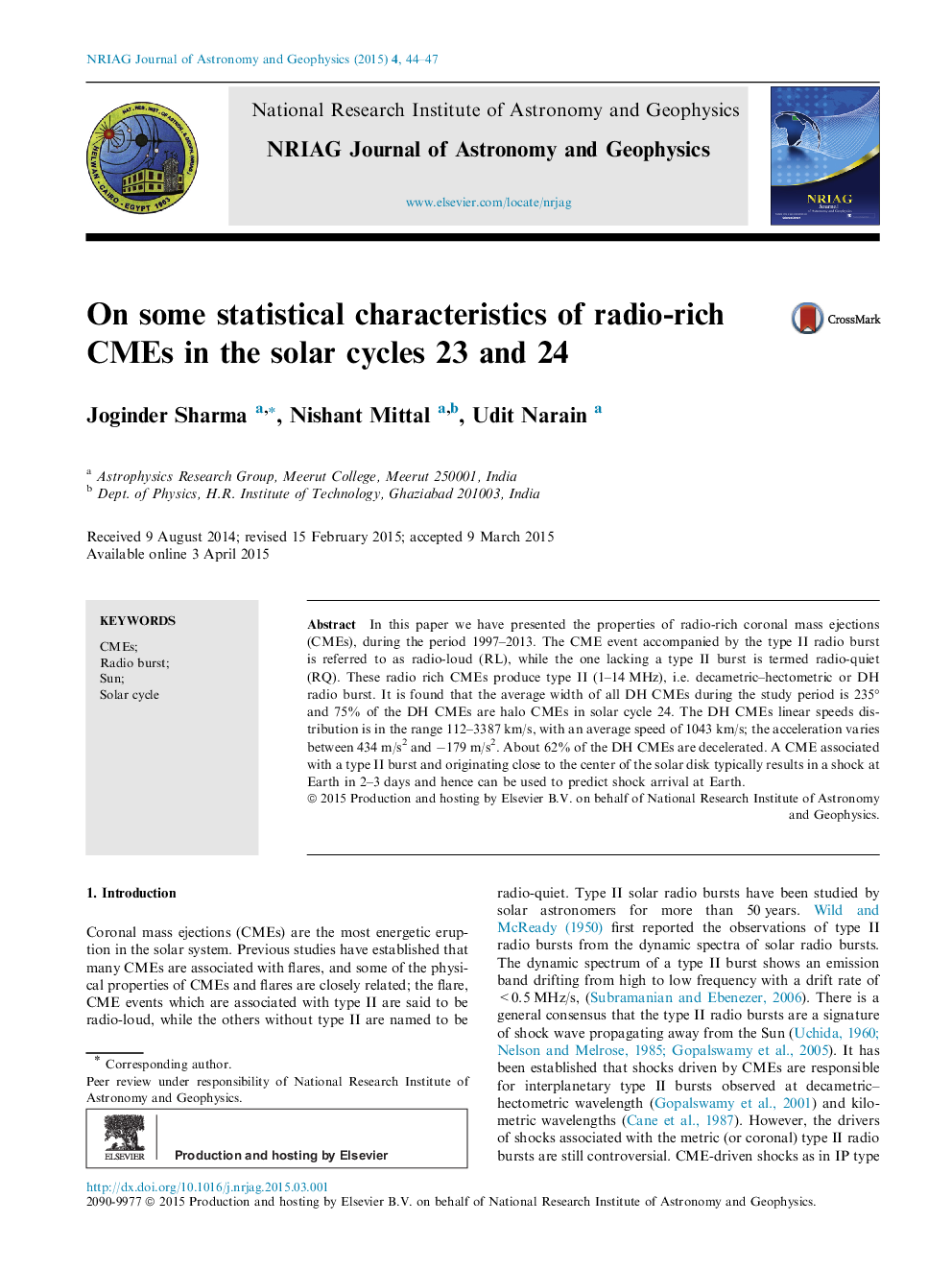| Article ID | Journal | Published Year | Pages | File Type |
|---|---|---|---|---|
| 1780595 | NRIAG Journal of Astronomy and Geophysics | 2015 | 4 Pages |
In this paper we have presented the properties of radio-rich coronal mass ejections (CMEs), during the period 1997–2013. The CME event accompanied by the type II radio burst is referred to as radio-loud (RL), while the one lacking a type II burst is termed radio-quiet (RQ). These radio rich CMEs produce type II (1–14 MHz), i.e. decametric–hectometric or DH radio burst. It is found that the average width of all DH CMEs during the study period is 235° and 75% of the DH CMEs are halo CMEs in solar cycle 24. The DH CMEs linear speeds distribution is in the range 112–3387 km/s, with an average speed of 1043 km/s; the acceleration varies between 434 m/s2 and −179 m/s2. About 62% of the DH CMEs are decelerated. A CME associated with a type II burst and originating close to the center of the solar disk typically results in a shock at Earth in 2–3 days and hence can be used to predict shock arrival at Earth.
